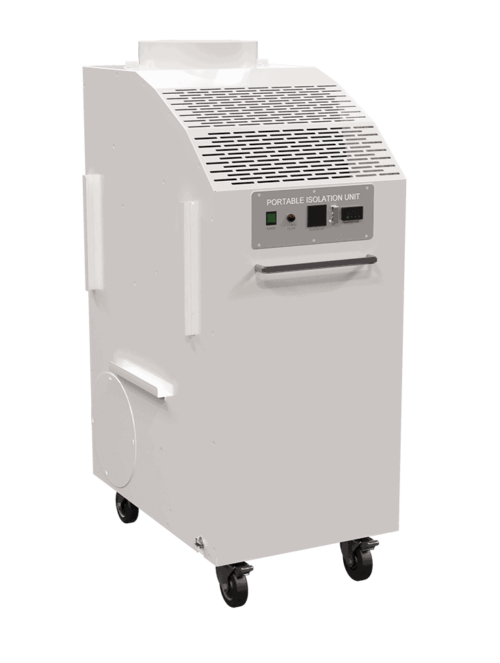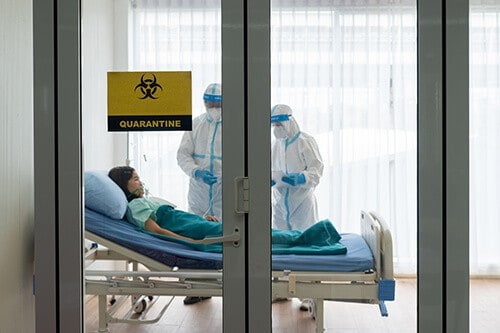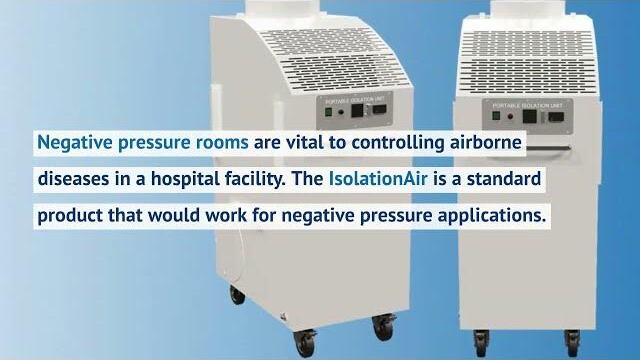Negative pressure rooms control airborne pathogens by exhausting contaminated air from the building while preventing the air from leaking into other parts of the facility. These rooms are a necessity to maintain the safety of guests, patients, and hospital staff.
At Air Innovations, Inc., our expertise in negative pressure HVAC systems will ensure that your hospital’s negative pressure rooms comply with industry standards.
What Are Negative Pressure Rooms?
Negative pressure rooms have inside air pressure that is lower than the air pressure outside of the room. This serves to prevent contaminated air from exiting the room while allowing non-contaminated air to flow into it. Contaminated air flows through a controlled HVAC system, where the air is purified using specialized filters before it exhausts from the facility.
Creating Negative Air Pressure in a Hospital Room
Negative pressure rooms are crucial in hospital settings as they isolate airborne diseases like COVID-19, SARS, and MERS from the rest of the facility and prevent them from spreading to patients, staff, and guests. A negative pressure room requires a dedicated space, where a barrier will keep the room as air-tight as possible. For isolation rooms in more open areas, a heavy plastic curtain can block air circulation. If the area has a door, it is important to block any gaps to create a tight seal.
When establishing an isolation room in a hospital, the HVAC system will require adjustments to ensure the room has a continuous inflow of fresh air. The contaminated air must be forced out through exhaust vents with a filtration system to purify the air before it exits the facility. An existing HVAC system may be suitable, or a portable contamination system can be used to focus on a particular area.
Types of Negative Pressure Isolation Rooms
There are two classes of negative pressure isolation rooms, class N and class Q. A class N room isolates airborne diseases within a room to protect the facility from exposure. They are typically near the entrance of an inpatient ward to prevent the spread of the disease during patient transport.
Class Q rooms also isolate airborne diseases but implement stricter safeguards. Some primary features include an anteroom, self-closing doors, a private restroom to keep the isolation room sealed, and a ventilation system that prevents exhausted air from re-entering the isolation room. Class Q rooms also feature a monitoring system that alerts staff if the pressure changes. These are all crucial features to ensure optimal infection control.
Hospital Spaces to Negatively Pressurize
Various hospital spaces should be negatively pressurized for safety and compliance. According to ANSI/ASHE/ASHRAE standard 170-2017 of the 2018 FGI guidelines, negative pressure spaces include but are not limited to:
- Isolation Rooms for Airborne Infections
- Autopsy Rooms
- Bathrooms
- Public Waiting Areas and Radiology Department Waiting Areas
- Emergency Department Decontamination Bays
- Various Laboratory Work Areas
- Triage
- Janitor’s Closets
- Sterile Processing Areas and Soiled Decontamination Areas
- Soiled Workrooms and Holding Rooms
- Soiled Linen Sorting and Storage Areas
General patient examination, X-ray, and nursery areas typically do not require negative pressure rooms.
Testing and Monitoring Room Pressure
Monitoring for consistent low pressure in an isolation room is vital to ensure the safety of a facility. While a tissue or smoke capsule can confirm if the room is pressurized, modern equipment provides continuous monitoring of the room’s pressure. Electronic monitoring devices can be placed inside the isolation room and outside to trigger an alarm when the pressure reaches a set threshold. Regular inspection is necessary to ensure the devices are not contaminated or broken.
Contact the Experts at Air Innovations for Custom HVAC Systems
Negative pressure rooms are vital to controlling airborne diseases in a hospital facility. When setting up a negative pressure room, the experts at Air Innovations, Inc. can create a custom HVAC solution for your facility.

Air Innovations offers specialty environment control units to meet the needs of various critical applications. Our IsolationAir® portable contamination systems deploy quickly to isolate a sterile environment and prevent cross-contamination. These systems come equipped with UV sterilization, HEPA filtration, and ductwork connections. Whether you need to turn a room into a negative or positive pressure environment, our IsolationAir® system offers the ideal solution.
Our expertise will ensure your isolation rooms are compliant with ASHRAE, AIA, and CDC guidelines to protect patients, staff, and guests. Contact us to speak with a representative or request a quote to learn more.




